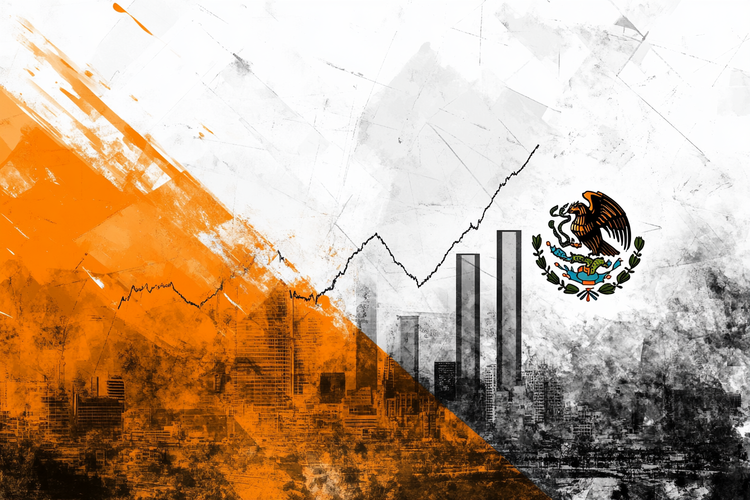- The US Dollar Index falls below 108.00 on Friday, November 22.
- DXY pulls back from 2-year high despite strong S&P PMI data; Profit taking and China’s stimulus package contribute to the pullback.
- Fed officials remain cautious with Barkin citing inflation risks and Williams signaling a possible rate cut.
In Friday’s session, the US Dollar Index (DXY) declined slightly after hitting a new two-year high amid geopolitical instability. However, strong S&P PMI data reinforced the relative resilience of the US economy, supporting the DXY’s gains.
The US dollar’s decline was attributed to profit-taking and positive economic indicators from China, including a rate cut and a comprehensive stimulus package. Consequently, the DXY retreated from above 108.00, stabilizing around 107.50.
The DXY, which values the greenback against a basket of major currencies, maintains a bullish bias, driven by strong economic data and a less dovish stance from the Federal Reserve (Fed). Despite the pullback, the bullish trend remains intact, with investors now expecting a gradual pace of rate cuts. Technical indicators suggest possible consolidation, but overall bullish momentum remains strong.
Daily Market Summary: US Dollar Holds Gains After PMI Data, Profit Taking
- The US Dollar Index fell after hitting a new two-year high due to geopolitical instability and profit taking.
- The DXY found support in strong S&P PMI data indicating the resilience of the US economy.
- Positive economic news from China, such as a rate cut and stimulus package, contributed to the DXY’s pullback.
- On the data front, the US S&P Global Composite PMI rose 1.2 points to 55.3 in the November flash estimate.
- The S&P Global Manufacturing PMI improved marginally from 48.5 in October to 48.8, but remains in contraction.
- The S&P Global Services PMI rose noticeably from 55 to 57, indicating continued expansion.
DXY Technical Outlook: Index consolidates after hitting 108.00
The DXY has shown signs of easing after reaching 108.00 due to profit taking by investors. Technical indicators, particularly the Relative Strength Index (RSI) and Moving Average Convergence/Divergence (MACD), indicate overbought conditions, suggesting a possible slight correction in the index. Despite this, the index remains supported by strong economic data and the Fed’s hawkish rhetoric, maintaining an overall bullish trend. The uptrend now faces resistance around 108.00 and support at 106.00-105.00, with profit-taking and risk-off sentiment potentially leading to a pullback or consolidation in the near term.
The US Dollar FAQs
The United States Dollar (USD) is the official currency of the United States of America, and the “de facto” currency of a significant number of other countries where it is in circulation alongside local banknotes. According to 2022 data, it is the most traded currency in the world, with more than 88% of all global currency exchange operations, equivalent to an average of $6.6 trillion in daily transactions. After World War II, the USD took over from the pound sterling as the world’s reserve currency.
The single most important factor influencing the value of the US Dollar is monetary policy, which is determined by the Federal Reserve (Fed). The Fed has two mandates: achieve price stability (control inflation) and promote full employment. Your main tool to achieve these two objectives is to adjust interest rates. When prices rise too quickly and inflation exceeds the 2% target set by the Fed, the Fed raises rates, which favors the price of the dollar. When Inflation falls below 2% or the unemployment rate is too high, the Fed can lower interest rates, which weighs on the Dollar.
In extreme situations, the Federal Reserve can also print more dollars and enact quantitative easing (QE). QE is the process by which the Fed substantially increases the flow of credit into a clogged financial system. This is an unconventional policy measure used when credit has dried up because banks do not lend to each other (for fear of counterparty default). It is a last resort when a simple lowering of interest rates is unlikely to achieve the necessary result. It was the Fed’s weapon of choice to combat the credit crunch that occurred during the Great Financial Crisis of 2008. It involves the Fed printing more dollars and using them to buy US government bonds, primarily from financial institutions. QE usually leads to a weakening of the US Dollar.
Quantitative tightening (QT) is the reverse process by which the Federal Reserve stops purchasing bonds from financial institutions and does not reinvest the principal of maturing portfolio securities in new purchases. It is usually positive for the US dollar.
Source: Fx Street
I am Joshua Winder, a senior-level journalist and editor at World Stock Market. I specialize in covering news related to the stock market and economic trends. With more than 8 years of experience in this field, I have become an expert in financial reporting.







